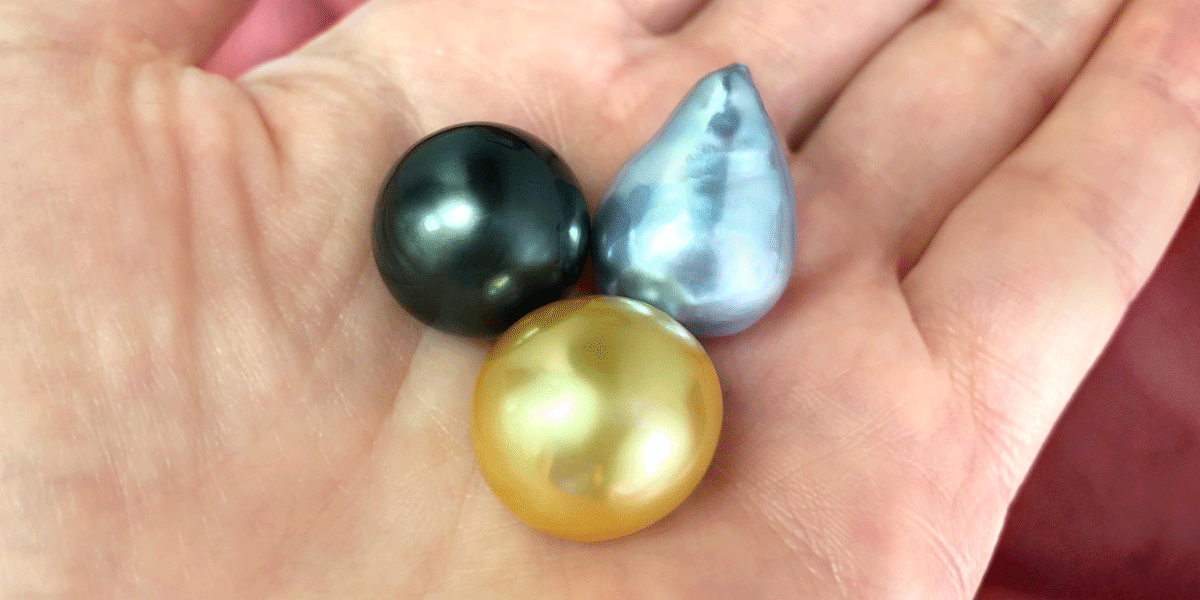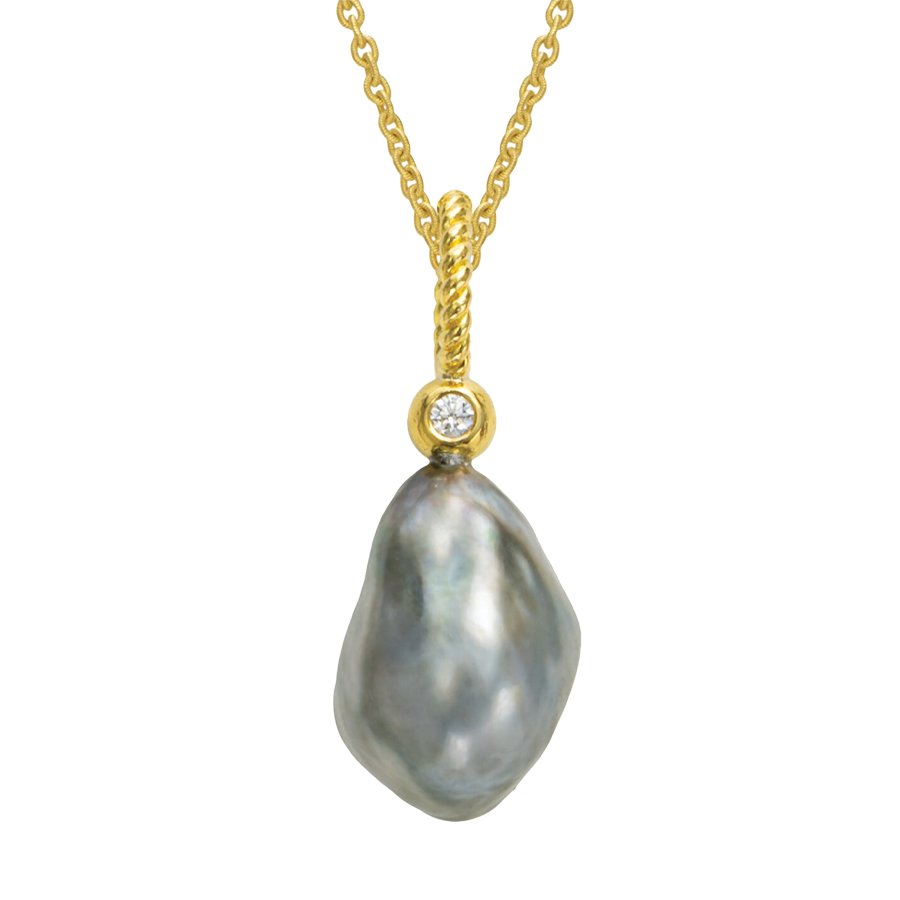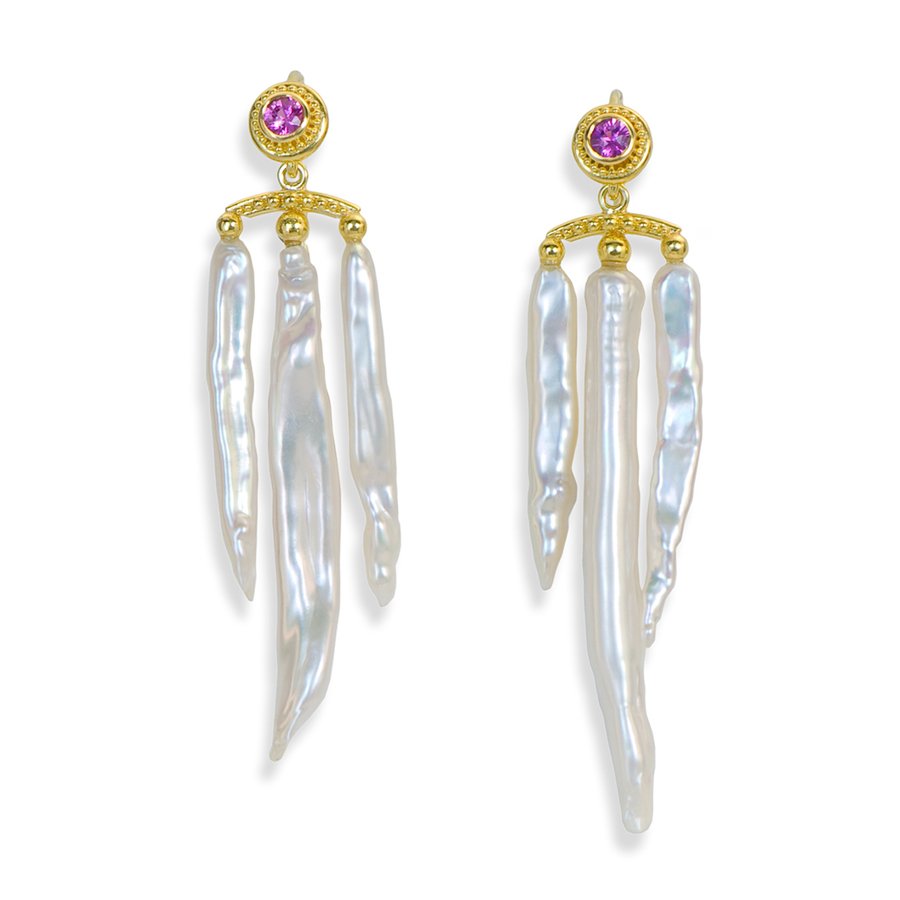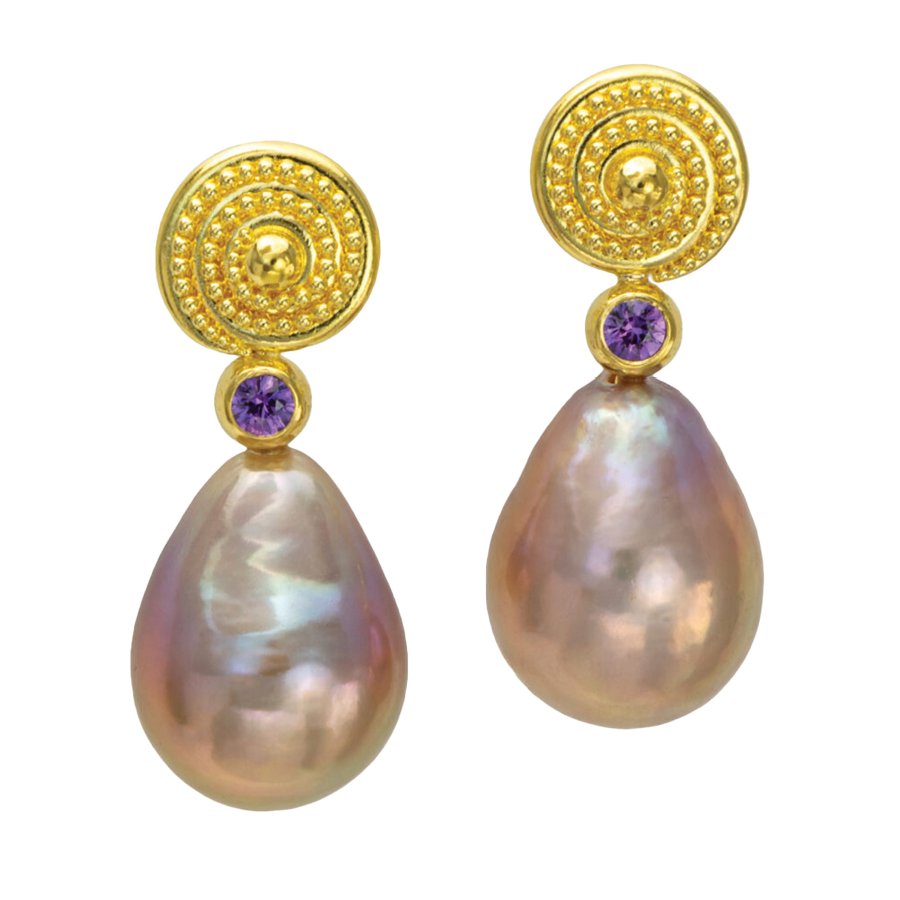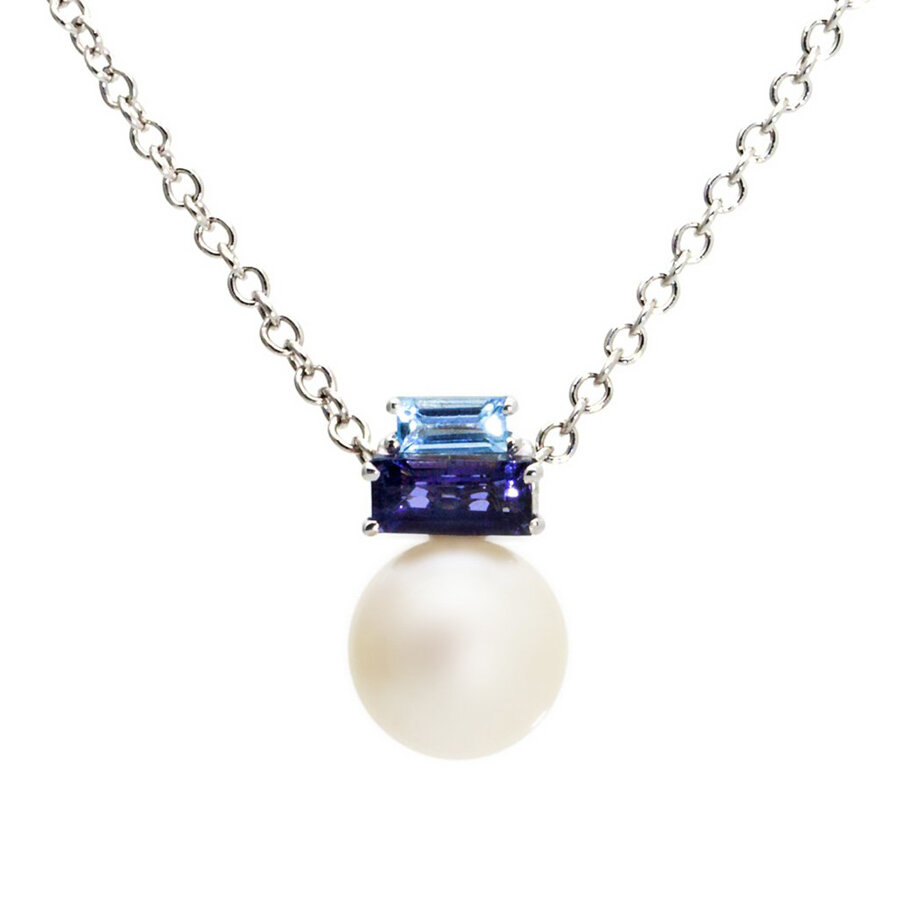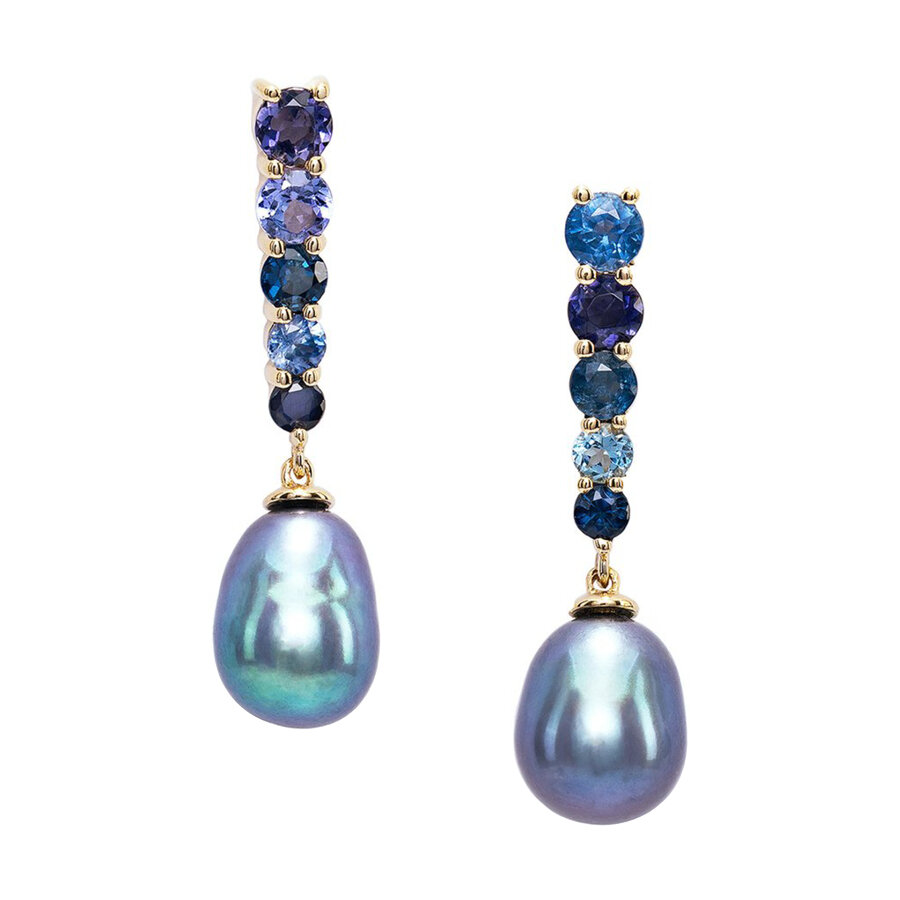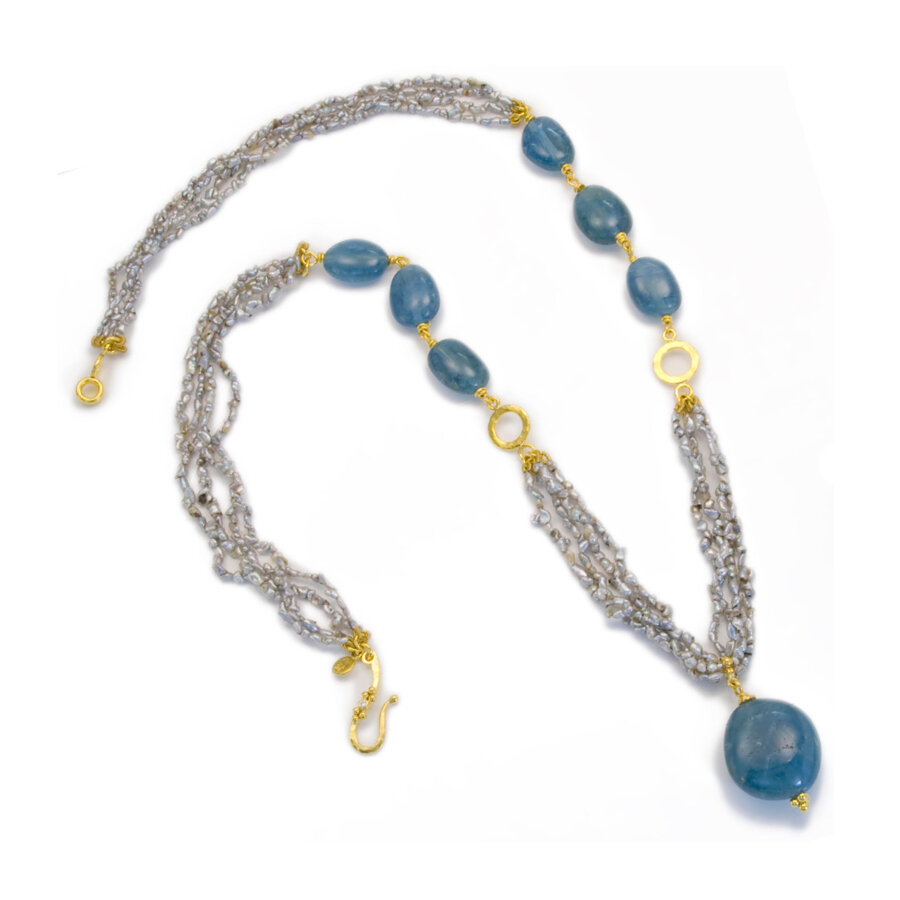Pearls: A VIRTUAL Sparkling Tasting
The Queen of Gems has captivated the world as early as 2300 BC with their delicate, luminous spheres.
Adrianne Sanogo and I hosted an engaging virtual “Sparkling Tasting” of discerning pearls to explore the fascinating history and beautiful science of these wonders of Mother Nature: how they are created, what makes each species special, and the qualities that determine value!
We also played a “value game”, to guess:
WHICH PEARL IS THE MOST VALUABLE?
BLACK TAHITIAN
French Polynesia
15 mm round
BAROQUE SOUTH SEA
Indonesia
16 X 21.7 mm
GOLDEN SOUTH SEA
Philippines
16.5 X 17.6
Before we reveal the answer, I invite you to meet a diverse array of these lovelies in action along with a few things to know about pearls!
3 THINGS TO KNOW ABOUT PEARLS
First, pearls are not a mineral, but an organic gem! It is also a luminous act of self-defense: a mollusk protecting itself from an invasion of an irritant. Pearls are cultured around the world where the water’s ecosystem is pristine, healthy, and rich in various forms of plankton and nutrients for mollusks to thrive. As filter feeders, they absorb any impurities in the water, so this affects the health of the mollusk and therefore the quality of pearl they may create.
Second, pearls can cultured in freshwater or saltwater and have very different price points. Freshwater mollusks can produce many pearls at once over a single growth cycle, while saltwater mollusks produce a SINGLE pearl (such as a Tahitian pearl) over 5 - 7 YEARS. Rarity plays a significant role in the value of pearls, just like any other gemstone.
Third, Pearl is very soft! It is a “2.5” on the Mohs scale of hardness, meaning it is easily scratched or damaged with accidental bumps. Choosing kinds of jewelry (i.e. necklaces, earrings, and cocktail rings) that will encounter less contact with harder surfaces are good options. Pearl is not the most durable gemstone for an everyday or engagement ring.
WHAT ARE THE COLORS OF PEARL?
The possibilities are as diverse as are their shapes and sizes, which you can discover with The Skinny on Pearl!
PEARL JEWELRY
THAT WILL TURN HEADS
3 RIVETING QUESTIONS ABOUT PEARLS
CAN PEARLS BE DAMAGED FROM PERSPIRATION WHEN WORN ON HOT DAYS?
Not necessarily.
Pearls want to be worn! As they are porous, natural oils of your warm soft skin act as a “moisturizer” of sorts. Wearing your pearls enhances their luster and keeps them from drying out.
However, your skin does have acid and weakness varies from person to person. It is a good idea to gently wipe away any build-up or traces of perspiration with a soft moist cloth. More important, avoid wearing pearls on your skin where you have applied sunscreen, fragrance, or other skincare products. A good practice is: your jewelry is the last thing on and first thing off.
Keep in mind that oils and moisture of any kind (including perspiration) can weaken silk thread, resulting in loss - especially if strands are not knotted. If you wear your pearls often, have them restrung yearly. Examine strands regularly for slight gaps that may appear between pearls, as this is indicative of silk thread that is weakening.
Exposing pearls (and opals) to extreme temperatures or leaving them in direct sunlight can damage them. Be sure to securely store them in their own pouch or box.
IS IT OK TO WEAR PEARLS IN THE SHOWER OR SWIM IN THE OCEAN OR POOL?
It is not a good idea.
While pearls may come from freshwater or saltwater, sand in the air and water is abrasive.
A dip in a lake, hot tub, and taking a bath or shower with pearl strands can weaken the fibers of silk thread they are strung with - resulting in the loss of your luminous treasures.
It is important to remember that chlorine is a chemical - and can dull luster. Water or other chemical substances (shampoo to body wash) can seep into drill holes, resulting in deposits of minerals and damaging the delicate nacre layers.
WHAT IS THE BEST WAY TO CLEAN PEARLS?
Any jewelry should be cleaned regularly, but pearls require special care.
• Do not use steam or ultrasonic cleaners with pearls - the latter can shatter these fragile organic gems and diminish their appearance.
● Wipe pearls with a damp, soft cloth as needed. Water and wear over time will weaken silk thread, so check strands annually and restring every 1 - 3 years as needed.
● Take any investment pieces to a trustworthy professional jeweler once a year for a thorough cleaning and inspection.
● See our full guide to How To Clean Fine Jewelry.
STORAGE: Once dry, keep pearl pieces individually stored in a pouch or box to avoid scratches and abrasions from other gemstones, as well as general tangles and dents.
INSURANCE: For any jewelry of significant value, be sure to have it appraised, file any provenance and gemstone report in a secure place, and be sure to have it insured.
THE MOST VALUABLE IS:
THE BLACK TAHITIAN PEARL!
The Black Tahitian is 3.9 times more valuable than the baroque South Sea
Black Tahitian pearls are among the rarest of the Tahitian varieties - especially those that have a dark, iridescent glow and grow to a significant size with uniform roundness, like the Black Tahitian. The market generally values uniformly round pearls over other shapes. All that said, the baroque South Sea, has a very high luster and its blue silvery hues are without any doubt alluring!
Golden South Sea is 2.1 times more valuable than the baroque South Sea
Golden South Sea Pearls of significant size are rare and the smallest percentage of these are uniformly round. Those that exhibit the deepest of golden hues are the most prized. As the Golden South Sea is slightly oblong, it is less valuable than a similarly golden pearl that is more perfectly spherical.
The most important distinction:
Beyond what the market dictates, whatever color, shape or size of pearl that is uniquely beautiful to you is what matters most!
MANIFESTING YOUR INTENTIONS WITH PEARL
This gemstone attracts sincerity, integrity, and focus.
Just as our ancient ancestors believed gemstones were imbued with special properties, such as protection, wisdom, or courage, today we are empowered by the metaphysical properties of gemstones to manifest what we wish to create.
You may be interested in our guide to visualize your intentions through the metaphysical properties of gemstones and jewelry.
What to know about ETHICAL GEMSTONES and GOLD to ensure your jewelry is NOT FUNDING CONFLICT
WHAT DOES RESPONSIBLY SOURCED MEAN?
In the same way that we know where our food is from and who made our clothes, why not jewelry?
Responsible sourcing goes beyond ethically or sustainably sourced. This encompasses conflict-free, traceability, protecting people, their skills, and the environment be it land or sea. This is an open, evolving conversation worth having, as we all seek to make choices that align with our values.
As much as possible, the designers in this community do their best to choose jewelry “ingredients” that honor this.
Gemstones can be responsibly sourced or post-consumer recycled (recovered from previously worn jewelry to be reset in a new design).
For precious metals, this can mean using recycled gold - or a step further is mercury-free Fairmined gold.
WHAT IS FAIRMINED GOLD?
As we make ethical choices with Fairtrade wine, food, and fashion, why not the gold in our jewelry? Let’s compare recycled gold versus Fairmined gold…
THE BRILLIANT CONCIERGE: YOUR FINE JEWELRY GUIDE
I find discerning jewelry that aligns with your values. Beyond gemstone sourcing, this includes private shopping for:
rings
earrings
necklaces
bracelets
responsibly sourced gemstones
Learn more about this white-glove service.

